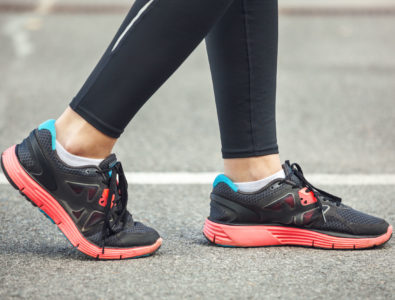 Much like De Beers has created a great marking campaign for diamonds, so too has the running industry for cushioned shoes. It stands to reason that if you’re going to be putting repetitive stress on your feet when you run, you should have a cushioned shoe to protect your feet and knees, but a new study suggests that these padded shoes may actually be putting our feet at a higher risk of injury.
Much like De Beers has created a great marking campaign for diamonds, so too has the running industry for cushioned shoes. It stands to reason that if you’re going to be putting repetitive stress on your feet when you run, you should have a cushioned shoe to protect your feet and knees, but a new study suggests that these padded shoes may actually be putting our feet at a higher risk of injury.
The study published in Scientific Reports wanted to get a better understanding of why running injury rates haven’t dropped over the decades despite insistence from shoe marketing campaigns that the newest models offer our feet the best protection money can buy. What they uncovered was eventually classified as the shoe cushioning paradox.
The Shoe Cushioning Paradox
For their study, researchers measured the impact loading and the spring-like mechanics of driving forward while running in two different sets of shoes. The first was a normal running shoe, while the second was a highly cushioned maximalist running shoe. Researchers tested the shoes at two different running speeds, at 10 km/h and 14.5 km/h. Here’s what they found:
- At the faster speed, individuals in the maximalist shoes had a 10.7% higher impact force and 12.3% greater spring-like running force than individuals in the normal running shoes.
- At the slower speed, individuals in the maximalist shoes had a 6.4% higher impact force than runners in the normal running shoe.
This led researchers to define what they call the shoe cushioning paradox. Although the highly cushioned shoes are designed to protect your feet from repetitive forceful blows, the cushioning actually works to bounce and spring a person back off the ground, leading to a higher push off force and a higher landing force with each step. Researchers believe that the extra cushioning also leads to poorer running mechanics and stiffer legs during landing, since we don’t need to get our bodies in a position to help soften the force, because the padding is doing the work for us. This leads to higher repetitive impact rates and in turn, greater long term injury risk.
Researchers concluded that runners shouldn’t automatically assume the most padded shoe options will best protect their feet, and instead, they should look for a shoe that best suits their particular running style.
“The observed running mechanics adjustments in the present study resolve the shoe cushioning paradox and also point towards importance of speed-specific optimization of the shoe properties in order to improve running injury prevention,” researchers wrote.
If you need help understanding what type of running shoe would be best for your feet, or you want to have Dr. Silverman examine a foot issue you’re dealing with, reach out to his office today.